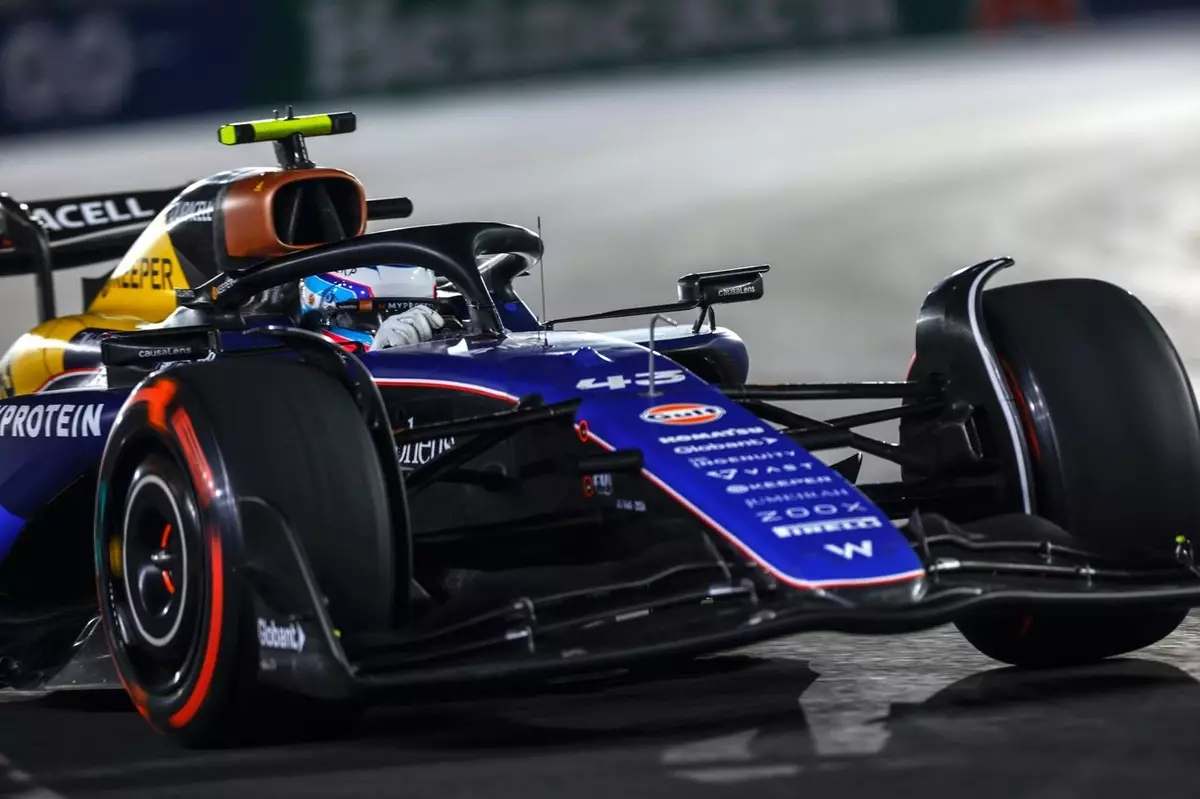Franco Colapinto Confronts Setbacks with Renewed Resolve: A Look at Williams’ Performance Dynamics
Imagine being in the cockpit of a Formula 1 car, the roar of the engine filling your ears, and the track stretching out before you like a daunting challenge. This is the world that Franco Colapinto has been navigating in the latter part of the 2024 season. His journey, marked by highs and lows, is a testament to the brutal and unforgiving nature of motorsport. After a significant crash during the Q2 qualifying session in Las Vegas, Colapinto found himself facing new challenges. The team at Williams had to revert to an older front suspension design due to damage incurred in the crash—a decision that speaks volumes about the strategic challenges they’ve faced this season.
The choice to use an older suspension wasn’t made lightly; it was born from lessons learned in previous races. Despite having an extensive upgrade package ready, including a new front suspension configuration intended for their FW46 model, several early-season crashes forced Williams to delay these updates. This situation highlights not only the physical demands of racing but also the intricate strategy involved when one wrong move can alter everything. Colapinto’s candid acknowledgment of these risks underscores the acute awareness necessary when operating on the razor’s edge of performance.
Key Takeaways
- Franco Colapinto’s resilience is tested as he adapts to older race setups after a significant crash.
- The Williams team faces ongoing challenges with resource constraints and logistical hurdles.
- Strategic decisions in racing often stem from hard-earned lessons and can impact performance dynamics.
The Psychological Resilience of a Young Driver
As the penultimate race in Qatar draws near, Colapinto remains steadfast despite recent setbacks. “We are changing the suspension,” he confirmed, showing his willingness to adapt under challenging circumstances. His acceptance of the limitations posed by using an older specification highlights his maturity as a driver—balancing elite sport demands with resource realities. The struggle to secure updated components sheds light on the logistical challenges faced by under-resourced teams like Williams in Formula 1.
Reflecting on his Las Vegas qualifying session, Colapinto shared insights into a racer’s psychology. “I was feeling really good in qualifying,” he noted, illustrating how confidence can boost performance significantly. Yet, this confidence can quickly turn into overconfidence, leading to critical errors. His admission that his aggressive Q2 strategy was driven by necessity—pushing limits due to past setbacks—emphasizes the delicate dance between risk and reward inherent in competitive racing.
Looking Ahead: Lessons and Opportunities
As we approach the season’s end, both Colapinto and Williams must tackle not only technical car challenges but also embrace valuable lessons learned throughout pivotal moments this year. The modified suspension setup may come with some performance compromises; however, the true test lies in how well Colapinto can maximize potential within these limits. Motorsport often mirrors resilience, and as Colapinto prepares for his final 2024 season challenges, his journey reminds us of motorsport’s relentless pursuit of improvement and unyielding passion driving this industry.
In stabilizing their performance for remaining races, Williams’ story highlights racing dynamics’ intricacies and human spirit’s adaptability amidst adversity. As they work tirelessly behind scenes ensuring everything runs smoothly on track day after day—Colapinto’s story stands testament not only towards personal growth but broader implications across entire sport landscape reminding us all what makes Formula One truly unique experience unlike any other.
Final Thoughts
The world of Formula 1 is as much about individual perseverance as it is about cutting-edge technology and team dynamics. Franco Colapinto’s journey through setbacks and triumphs encapsulates this perfectly. His ability to adapt and maintain focus despite equipment limitations speaks volumes about his character and potential as a driver. For fans and fellow racers alike, his story is an inspiring reminder that even in a sport dominated by speed and precision, human resilience remains at its core.
As we continue watching Williams navigate their path forward amidst constant evolution around them—one thing becomes abundantly clear: Motorsport isn’t just about crossing finish lines first—but rather enduring every twist turn thrown along way emerging stronger each time anew ready face whatever comes next head-on always looking ahead never back down no matter what happens next race day rolls around once more again soon enough once final flag drops signaling end another incredible chapter book called life lived fullest possible extent imaginable right here now today tomorrow forevermore together united shared love passion excitement exhilaration found nowhere else world quite like place call home known affectionately simply put best kept secret hidden plain sight known few cherished many loved dearly universally understood appreciated worldwide wherever go look find joy happiness waiting greet warmly open arms wide welcome embrace heart soul mind body spirit whole community global family intertwined woven together intricately beautifully seamlessly perfectly harmoniously eternally everlastingly eternally everlasting evermore evermoreevermoreevermoreevermoreevermoreevermoreevermoreevermoreev [CONTINUE FROM HERE]
Franco Colapinto
Williams Racing
Formula 1
motorsport challenges


Leave a Reply